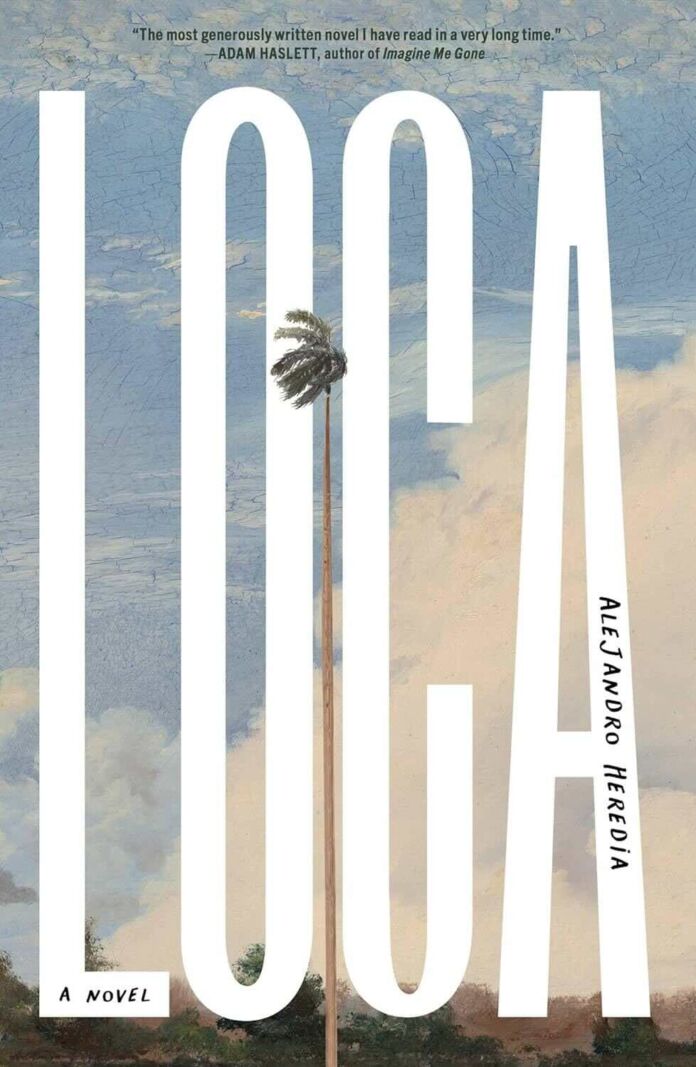In his spellbinding debut novel “Loca,” Alejandro Heredia crafts an intricate narrative that weaves together themes of identity, migration, trauma, and the transformative power of friendship. Set against the backdrop of late 1990s New York City and Santo Domingo, the story follows two Afro-Caribbean friends, Sal and Charo, as they navigate the complexities of building new lives while carrying the weight of their past.
Plot and Narrative Structure
The novel unfolds through interweaving timelines, skillfully alternating between the present (1999) and pivotal moments from the characters’ past in Santo Domingo. This non-linear structure serves to gradually reveal the layers of trauma and connection that bind the protagonists, particularly the tragic event that prompted Sal’s departure from his homeland.
Heredia’s narrative choices are deliberate and effective, though occasionally the transitions between timelines can feel abrupt, requiring careful attention from readers to maintain their bearings in the story. However, this minor criticism is overshadowed by the author’s masterful handling of multiple perspectives and his ability to create authentic, fully realized characters.
Character Development and Relationships
The Central Friendship
At the heart of “Loca” by Alejandro Heredia is the profound friendship between Sal and Charo. Their relationship serves as an anchor throughout the novel, even as they pursue different paths and face unique challenges. Heredia excels at portraying the complexities of their bond – how they support each other while sometimes failing to fully understand one another’s struggles.
Supporting Characters
The novel’s supporting cast is equally well-drawn, particularly:
- Vance – Sal’s African American boyfriend whose presence challenges Sal to confront his past
- Ella – A trans woman whose friendship helps Charo question her prescribed roles
- Don Julio – Sal’s roommate whose own history of trauma and healing provides a powerful parallel narrative
- Robert – Charo’s controlling partner, portrayed with nuance rather than as a simple antagonist
Themes and Social Commentary
Intersectionality and Identity
One of the novel’s greatest strengths is its nuanced exploration of intersecting identities. Heredia thoughtfully examines how race, sexuality, gender, and immigrant status combine to shape his characters’ experiences. The author avoids simplistic representations, instead showing how these identities create both challenges and opportunities for connection.
Trauma and Healing
The novel’s treatment of trauma, particularly through Sal’s character, is both sensitive and realistic. Heredia demonstrates deep understanding of how past wounds inform present relationships, while avoiding the trap of defining his characters solely by their traumas.
Found Family and Community
“Loca” by Alejandro Heredia presents a compelling portrait of chosen family within the LGBTQ+ community. The author skillfully depicts how marginalized individuals create support networks that transcend traditional familial bonds.
Writing Style and Technical Elements
Heredia’s prose is both lyrical and precise, shifting seamlessly between poetic passages and sharp dialogue. His use of Spanish throughout the text feels natural and adds authenticity to the characters’ voices, though some readers might occasionally struggle with untranslated phrases.
Strengths:
- Rich, evocative descriptions
- Authentic dialogue
- Skillful handling of multiple languages
- Strong sense of place
Areas for Improvement:
- Timeline transitions could be smoother
- Some secondary plot threads feel underdeveloped
- Occasional pacing issues in the middle section
Cultural Context and Representation
The novel provides valuable insight into both Dominican and New York City LGBTQ+ cultures of the late 1990s. Heredia’s representation of these communities feels authentic and lived-in, avoiding common stereotypes while acknowledging cultural specificities.
Impact and Significance
“Loca” by Alejandro Heredia makes a significant contribution to contemporary LGBTQ+ literature, particularly in its representation of Afro-Caribbean queer experiences. The novel’s exploration of identity and belonging resonates beyond its specific cultural context, speaking to universal themes of self-discovery and connection.
Historical Context
Set against the backdrop of pre-millennium anxiety and changing social landscapes, the novel effectively captures a specific moment in time while exploring timeless themes. Heredia’s attention to historical detail – from the impact of Hurricane Floyd to the emerging awareness of HIV/AIDS – grounds the narrative in its era while maintaining relevance for contemporary readers.
Comparisons and Literary Context
While “Loca” is Alejandro Heredia’s debut novel, it stands alongside works by authors like Jaqueline Woodson and Ocean Vuong in its exploration of identity and belonging. The novel’s treatment of immigrant experiences recalls aspects of Junot Díaz’s work, though Heredia’s approach to queerness and gender identity marks new territory in Dominican-American literature.
Critical Assessment
Strengths
- Complex, well-developed characters
- Nuanced exploration of intersecting identities
- Strong sense of time and place
- Beautiful prose style
- Authentic dialogue and relationships
Areas for Development
- Pacing inconsistencies
- Some underdeveloped subplots
- Occasional clarity issues with timeline shifts
Final Verdict
“Loca” by Alejandro Heredia is a remarkable debut that announces Heredia as a significant new voice in contemporary literature. Despite some minor technical issues, the novel’s emotional depth, complex characterization, and beautiful prose make it a compelling and important addition to the canon of LGBTQ+ and immigrant literature.
The book will particularly appeal to readers interested in:
- LGBTQ+ literature
- Immigration narratives
- Contemporary literary fiction
- Dominican-American experiences
- Stories about friendship and found family
Recommendation
“Loca” by Alejandro Heredia is highly recommended for readers who appreciate complex character studies and nuanced explorations of identity. While some familiarity with Spanish may enhance the reading experience, the novel remains accessible to monolingual English readers. The book’s themes and emotional resonance will stay with readers long after they’ve finished the final page.





